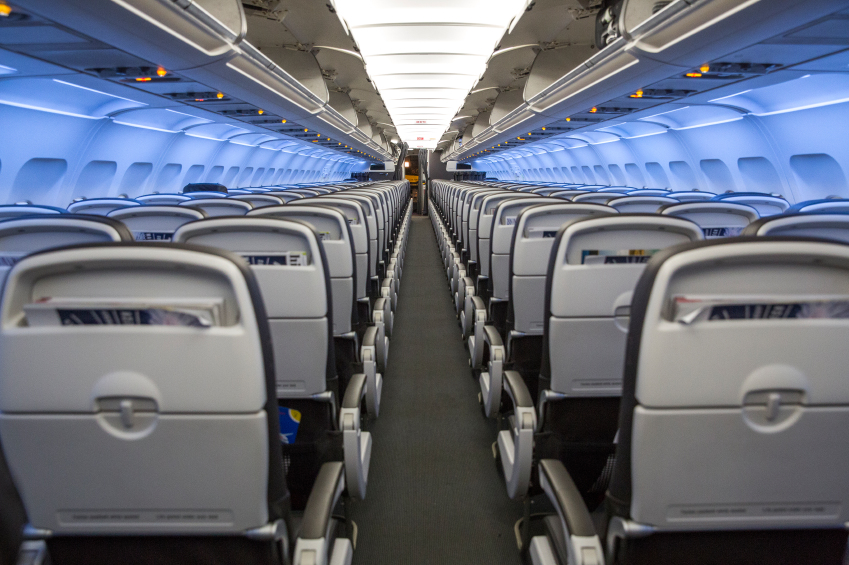In-flight entertainment systems has changed dramatically over the decades of commercial air travel. The year was 1921 when Aeromarine Airways screened the very first movie for its passengers. However, it took a long four decades before this became commonplace. It was not until 1961 that airborne entertainment considered an onboard staple.
Those old days of entertainment included the, now unthinkable, act of having drop down screens located around the cabin. This resulted in some passengers literally have the screen in their face. Others had to peer around or over other passengers heads to see the screen. Finally, in 1988, a key milestone in aviation’s history occurred. The use of seat-back personal entertainment systems made their appearance. Virgin Airlines advanced the idea of in-flight entertainment a step further in 1991 by making this technology available in all classes of service.
The word on the street today is that in-flight connectivity is now considered the most important element of flight service, more important even than seat comfort.
Here are a few digital trends in airborne entertainment hitting the market.
BYOD
The days of relying on the seat back in front of you for entertainment is coming to a somewhat speedy demise. As both business and personal travelers become even more attached to their personal devices, the concept of BYOD, AKA Bring Your own Device, has gained momentum. Systems which allow passengers to connect to a central Wi-Fi system allow for financial and weight attractions for the airlines. It also creates ease of use by the passengers, who are already familiar with their own devices.
Some new commercial aircraft has already eliminated the existence of seat-back entertainment systems. However, sadly, they have not done a good job of advising the traveling public which as caused some initial consternation. As this technology becomes more and more the norm the disgruntled comments should ease up.
Personal surround sound
Ever the leaders in their field, Virgin Airlines is currently working on installing an audio system that provides a surround sound experience to every passenger, even those using their own personal headphones. Cabin noise and bustle has long been a challenge for movie watching onboard. Except for the few travelers utilizing noise canceling headphones, the screaming children, passengers chatting, and general cabin noise is a huge distraction.
Technology that will allow even cheap headphones to deliver movie theater type sound will be a triumph. Even in the private jet industry, this helps entertain passengers. They enjoy their airborne entertainment even as fellow passengers move about the plane.
Jazz seats

While not yet on the market, jazz seats were a hit at the 2015 International CES Show. The tablet-like 13-inch screen offered admirable adjust-ability, allowing passengers to utilize great viewing angles. High-definition audio allowed for USB or traditional headphone connections, along with plenty of ports. The model even featured a wireless charging service able to handle mobile payments.
As airlines consider eliminating seat back in-flight entertainment systems completely, this technology may be outdated before it even receives a true test. But as times change, the ability for this system to fit into the slimmer seats being introduced, it does give a hint at the possibilities.
The choice is yours
Business aviation users, in particular, can be extremely demanding regarding connectivity and convenience while in-flight. The ability for on-demand systems is increasing in desire from passengers which translates into a necessity for airlines. While movies have been, and continue to be, the main source of in-flight entertainment, more and more options need to be introduced.
Some airlines now offer satellite reception allowing passengers to stream from their own cable providers, and a few have special features such as 24-hour live stream sports networks. Social media is also gaining popularity and although focus groups show that movies still reign, more and more travelers are looking to surf the web, Instagram their experience, and check-in on Facebook.
Meet and greet
Perhaps the most revolutionary idea for in-flight entertainment is the newly minted idea of meeting and greeting other passengers onboard. Sound a bit creepy? Some think it is. However, if you want to “chat up” a fellow passenger it is now possible. It’s now possible to connect across the aisle or even across the plane. It does require authorization from both parties so, never fear, stalking is kept to a minimum.
Chat options are already available on some flights. Perhaps the wave of the future will be the ability to make hundreds, or at least dozens, of new friends. You have the ability to make a new friend and then pull up a seat map to look for two seats together. Airlines are understanding that as coach class becomes more and more crowded and lacking in amenities, airborne entertainment can make or break passenger satisfaction.
As aviation entertainment technology continues to grow and expand, the options will continue to increase. As both business and pleasure travelers become more attached than ever to their devices commercial and private airlines will need to keep improving their airborne entertainment services to remain in demand. With so much choice in the market, companies must provide the most up-to-date services to grow and prosper.
This new generation of in-flight entertainment is about so much more than simple entertainment but also includes communication, connectivity, and social media all in one. Current systems often come with a cost to the passengers, but this may change in the future. Airlines understand overall customer experience is key. We all know that passengers like to be entertained.

